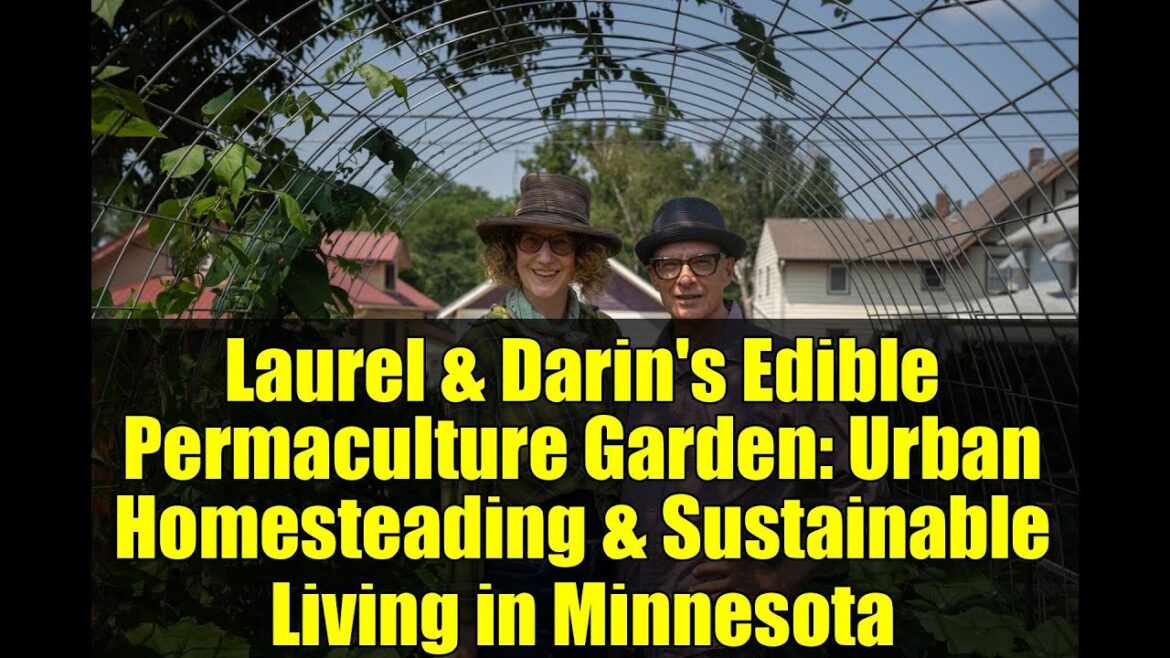Explore how Laurel Podulke-Smith and her husband Darin transformed their backyard into a thriving urban farmstead using permaculture principles. Learn about their journey from growing cherry tomatoes in pots to creating six raised beds, a greenhouse, chicken habitat, and more. Discover sustainable practices like composting, seed saving, and natural pest control with chickens. Plus, see how they give back to the community through plant giveaways and share tips for unconventional outdoor spaces. Whether you’re new to gardening or looking to enhance your homesteading efforts, this video offers actionable insights for growing food sustainably in any climate.
Keywords: permaculture garden, urban homesteading, sustainable gardening, edible landscaping, chicken coop ideas, composting tips, seed saving, Minnesota gardening, backyard farm, permaculture principles, organic vegetable garden, homesteading for beginners, eco-friendly living, community gardening, food preservation techniques
There’s a compelling allure in how Laurel Podulki Smith and her husband Darren have transformed their outdoor space into a thriving sustainable urban farm, blending their passions with community spirit. And this is the part most people miss. What started as a simple desire to grow favorite foods has blossomed into a complex system of permaculture-driven design that integrates food production, ecological balance, and social connections seamlessly. Earlier this year, readers had the chance to peek inside their historic 1905 foursquare home, a space reflecting their personalized touch and community focus. Now, the spotlight is on their backyard, which has blossomed into a lively farmstead right in the city, featuring not just a vegetable garden, but a thoughtfully designed ecosystem. What began with nothing more than cherry tomatoes and pots has expanded into a network of raised beds, arbers, trelluses, and a greenhouse complemented by a chicken coupe, outdoor pizza oven, and inviting patio areas. Their approach hinges on the principles of permaculture, a design philosophy aimed at creating sustainable and self-sufficient agricultural systems. Every year, the couple harvests a bounty of fresh produce from vine ripened tomatoes and peppers to cucumbers, beans, squash, and leafy greens. Beyond just growing food, they delight in sharing their surplus, distributing hundreds of seedlings to friends, neighbors, and fellow gardeners, fostering community bonds. When asked about their garden’s origins, they describe a journey driven by a simple yet profound motivation. eat the foods they love while nurturing the environment. Starting modestly with tomatoes and containers, they gradually added raised beds which now hold dozens of plant varieties supported by Darren’s craftsmanship, building trelluses, arbers, and fences to protect plants from wildlife like squirrels. The most rewarding part, watching their efforts bear fruit. Literally, they find deep satisfaction in saving seeds from their summer harvest. starting seedlings early spring and tending their garden throughout summer. During harvest time, many dinners are just a quick walk outside, picking ripe vegetables straight from the plants. Sustainability forms the core of their homestead philosophy. They focus on circular practices, waste not, want not. Their backyard chickens aren’t just producers of eggs. They’re essential allies against pests, eating insects, slugs, and snails that threaten their crops. The chickens also help reduce kitchen waste, gobbling up peels, and stems, which then go into composting bins, one of many ways they close the loop of resource use. Their compost is a vital part of their nutrient cycle, feeding into future planting seasons and emphasizing seed saving. Saving their own produce seeds each year ensures continuity and resilience for their garden. They emphasize that their homesteading practice is about creating a flourishing, self- sustaining system that benefits both environment and community. Food preservation is another critical element to survive Minnesota winters. They preserve summer’s bounty through freezing, pickling, fermenting, and drying, making sure that the taste of summer can brighten cold, gray days. It’s more than just sustenance. It’s a mood booster, a way to hold on to the warmth and vibrancy of their garden long after the growing season ends. Sharing is also a big part of their story. Each spring they host a plant giveaway, raising thousands of seedlings inside their greenhouse and sharing them freely with neighbors, friends, and family. It’s their way of spreading the love of gardening and boosting healthy food options within their community. For those eager to create their own unconventional outdoor spaces, the Podulki Smith’s best tip is simple yet powerful. Mulch your soil relentlessly. Covering the soil with straw, wood chips, leaves, or even pine needles, protects it from the elements, naturally fertilizes it, suppresses weeds, and maintains healthy soil temperatures. They believe that this practice helps recreate a lush forestlike environment in any garden, merging beauty with productivity. So, what do you think? Is this harmonious blend of food, sustainability, and community the future of urban gardening? Or do you see potential pitfalls in trying to emulate such a self-sufficient system? Drop your thoughts and opinions. This conversation is just getting started.


Comments are closed.